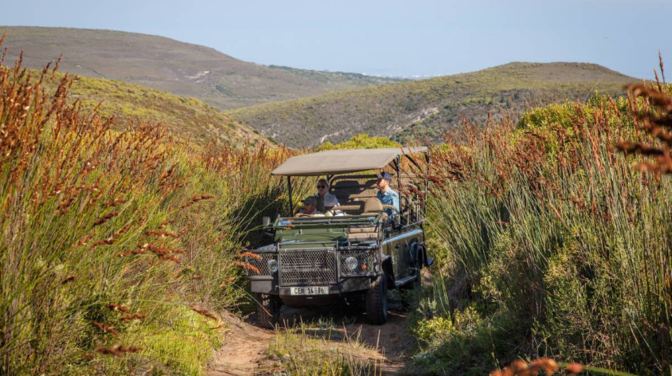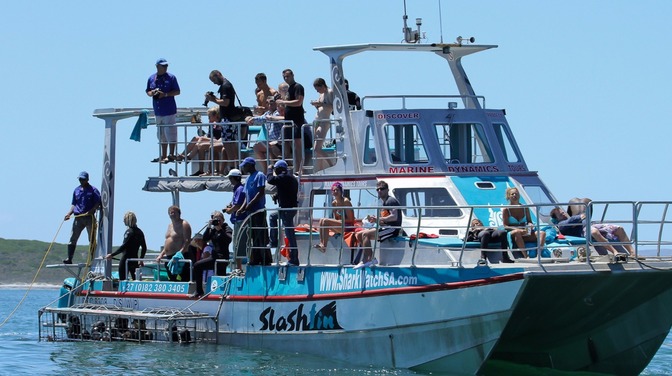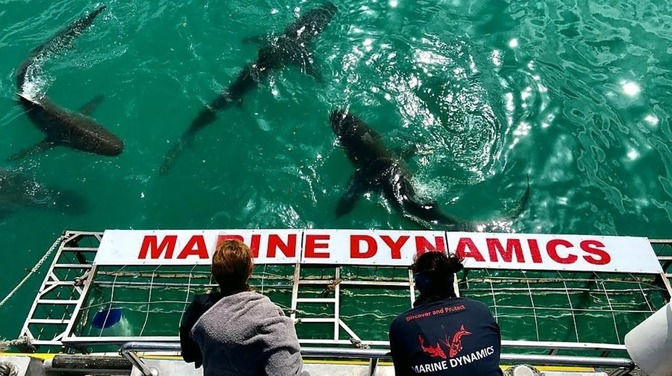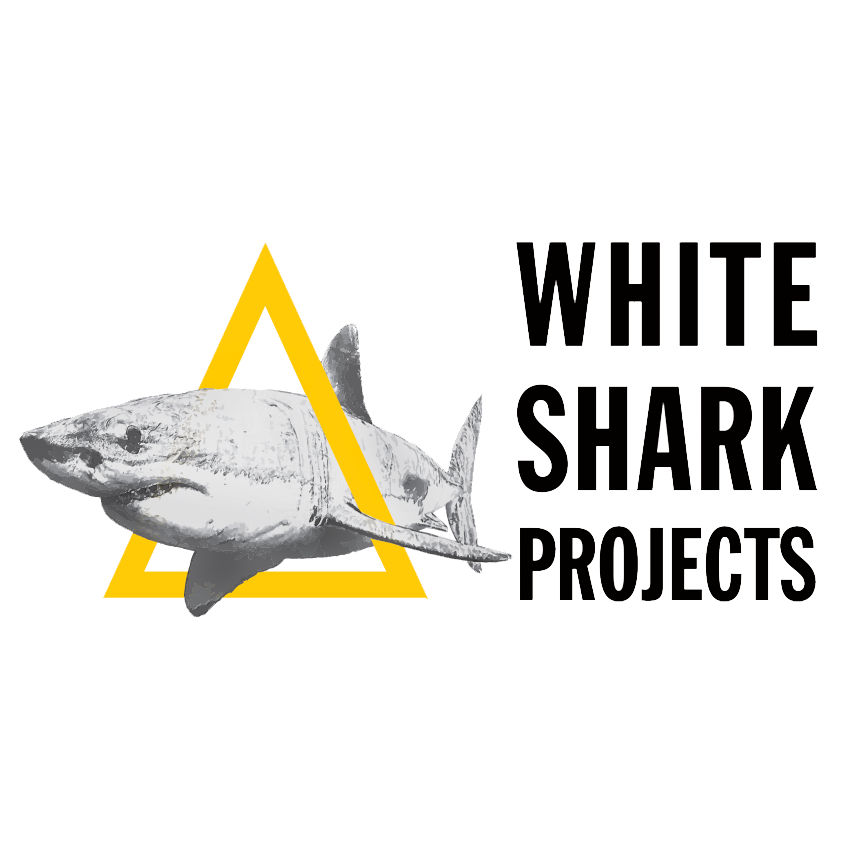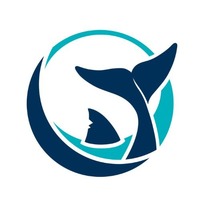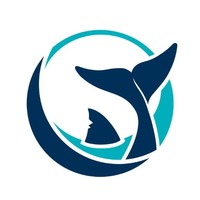Shark Diving Unlimited is pleased to have sponsored the scientific work of Dr Sara Andreotti. Dr. Andreotti has just released a paper on the new software that will standardise data collection for great white sharks The lack of a standardized procedure for collecting data about elusive and hard to find species like the great white shark has to date seriously hampered efforts to manage and protect these animals. But now a marine biologist, an applied mathematician and a software developer from Stellenbosch University joined expertise to develop a custom-made software package, called Identifin, which may offer a solution to this problem.
Dr Sara Andreotti, a marine biologist in the Department of Botany and Zoology at SU, have collected over 5000 photographic images of the dorsal fins of white sharks along the South African coastline as part of her research. This is because the trailing edge of the dorsal fin provides a unique trade, analogous to a human fingerprint. Over six years she managed to manually build a database with information on when and where an individual white shark was sighted. In those cases where she was able to collect a biopsy from the shark, the genetic information was linked to its profile. But she was doing all this manually on her personal computer.
“I nearly lost my head. I quickly realised that in the long term updating the database was going to consume more and more of my time. That is when I headed over campus to the applied mathematics division and asked for help. I was stunned when they became all excited about my data,” she laughs. Prof. Ben Herbst, a specialist in machine learning, and Dr Pieter Holtzhausen, a software engineer then busy with his PhD in Applied Mathematics, were literally overjoyed to be able to work with Dr Andreotti’ s data base. Dr Holtzhausen explains: “We used an algorithmic technique called dynamic time-warping to match the fingerprints. With this technique, any data that can be turned into a linear sequence can be analysed. The technique is often used in speech recognition software.” The image recognition software they developed, called Identifin, compares a semi-automatically drawn trace of the back edge of the dorsal fin to existing images in the database.
The images in the database are then re-arranged and ranked by probability of match. If there is a match, the database photograph in the first position will be the correct one.
The next step is to adapt Identifin for the identification of other large marine species and help other researchers facing the same kind of struggles. · The research was made possible with funding from Shark Diving Unlimited, the University of Stellenbosch, White Shark Diving Company and the Explorers Club. · The research article, ‘Semi-automated software for dorsal fin photographic identification of marine species: application to Carcharodon carcharias’ was published in the journal Marine Biodiversity. · A YouTube video with interviews and an animation of the technique available online at https://www.youtube.com/watch?v=2JNMnjVcXaI&feature=youtu.be
Contact details Dr Sara Andreotti E-mail: andreottisara@gmail.com Mobile: 072 3219198 Dr Pieter Holtzhausen E-mail: holtzhau@gmail.com Mobile: 084 998 6386
Additional reading Andreotti S, Rutzen M, Wesche PS, O’Connell CP, Meÿer M, Oosthuizen WH, Matthee CA (2014) A novel categorisation system to organize a large photo identification database for white sharks Carcharodon carcharias. African Journal of Marine Science 36:59–67.
Available online at http://www.tandfonline.com/doi/abs/10.2989/1814232X.2014.892027?journalCode=tams20 Andreotti S, Heyden S von der, Henriques R, Rutzen M, Meÿer M, Oosthuizen H, Matthee CA (2016)
New insights into the evolutionary history of white sharks, Carcharodon carcharias. Journal of Biogeography 43:328–339. Available online at http://onlinelibrary.wiley.com/doi/10.1111/jbi.12641/abstract Andreotti S, Rutzen M, Walt S van der, Heyden S Von der, Henriques R, Meÿer M, Oosthuizen H, Matthee C (2016)
An integrated mark-recapture and genetic approach to estimate the population size of white sharks in South Africa. Marine Ecology Progress Series 552:241–253. Available online at http://www.int-res.com/abstracts/meps/v552/p241-253/
Issued by Wiida Fourie-Basson, Media: Faculty of Science, Stellenbosch University, 021 808-2684, science@sun.ac.za
New software will standardise data collection for Great White Sharks
15 February 2017Share This Post
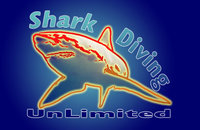
Welcome to Shark Diving Unlimited; more than just a professional shark cage diving organisation. This is the base of Mike Rutzen, well-known documenter and conservation advocate for sharks, also known as the Shark Man for his amazing skill of swimming with these animals. Our team are experts in l...
View ProfileWhat is Xplorio?
Xplorio is your local connection allowing you to find anything and everything about a town.
Read MoreOther Articles
Happy New Year from White Shark Projects!
As we reflect on 2024, we are overwhelmed with gratitude for everyone who was part of our journey.
Celebrating the Ocean's Timeless Beauty: A Reflection on 2024!
Celebrating the Ocean's Timeless Beauty: A Reflection on 2024!
Win a Shark Cage Diving Experience with Marine Dynamics!
From now until 15 January 2025, Marine Dynamics is giving three lucky winners the chance to experience the thrill of shark cage diving.
Daily Blog: 23 December 2024 | Shark Cage Diving in South Africa
What a day it turned out to be here in Gansbaai! With improving visibility and declining wind, guests were wowed with beautiful wildlife sightings.
Experience the Thrill of Shark Cage Diving with Marine Dynamics!
In South Africa’s waters, sharks are more than just an attraction, they’re vital to the ocean’s ecosystem.

